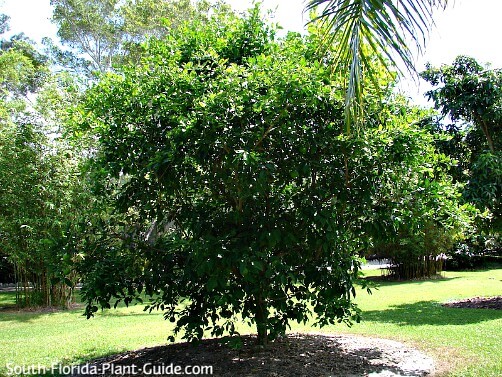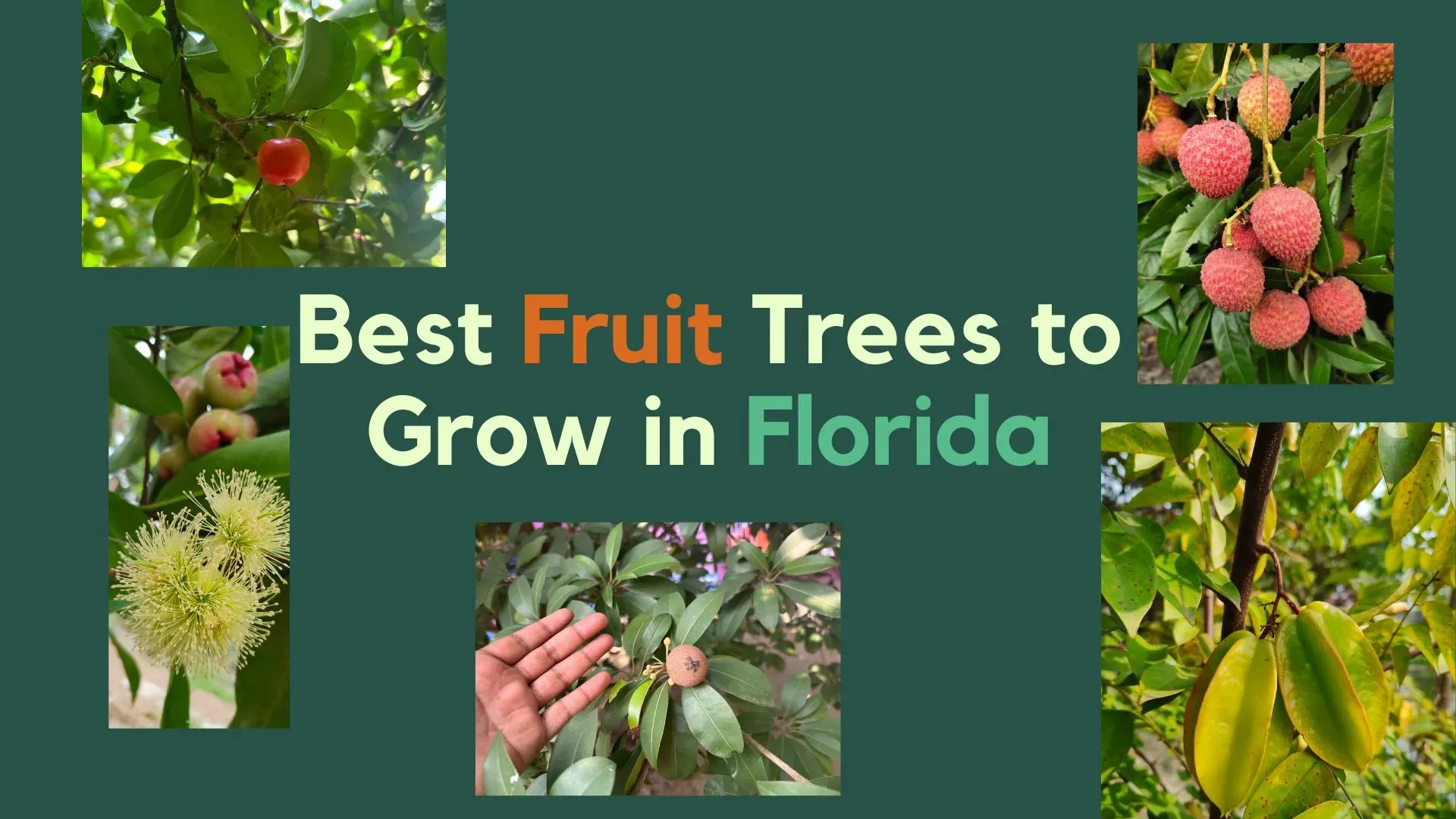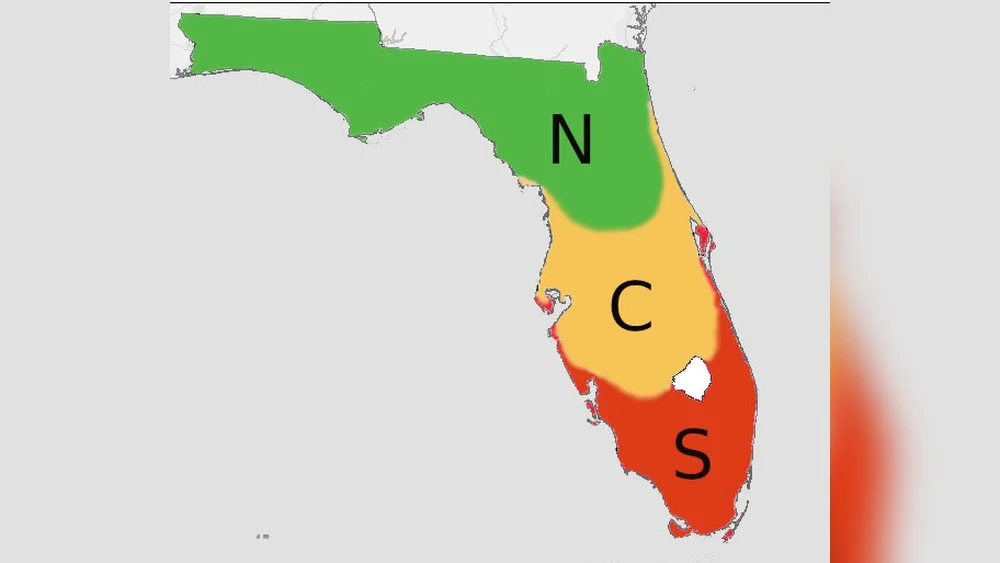Are you ready to grow your own juicy oranges, tangy lemons, or sweet grapefruits right in your South Florida backyard? Knowing the best time to plant citrus trees can make all the difference between a thriving tree and a struggling one.
You want your tree to establish strong roots, survive the heat, and produce bountiful fruit season after season. You’ll discover the ideal planting window for citrus trees in South Florida, along with practical tips to help your tree get off to the best start possible.
Keep reading to learn how to give your citrus trees the perfect head start—your future fruit harvest will thank you!

Credit: www.south-florida-plant-guide.com
Best Planting Months
Choosing the best months to plant citrus trees in South Florida is key to their success. The right timing helps the trees grow strong roots and survive the hot summers and mild winters. Planting during the best months reduces stress on the young trees and encourages healthy growth.
July To October Timing
July to October is the ideal window for planting citrus trees in South Florida. The soil is still warm, which helps roots grow quickly. The air starts to cool down, making it easier for young trees to adjust. Planting during these months gives the roots time to establish before winter arrives. This timing also avoids the extreme heat and drought stress of summer. Trees planted now get a strong start for the next growing season.
Benefits Of Fall Planting
Fall planting offers many advantages for citrus trees. Cooler air temperatures reduce water loss through leaves. This means trees need less frequent watering. The soil stays warm enough for root growth, even as the air cools. Fall planting helps trees build a strong root system during the cooler months. By spring, the trees are ready to grow vigorously and produce fruit. This timing lowers the risk of heat stress and pest problems during the first year.
Climate And Soil Factors
Understanding climate and soil factors is essential for planting citrus trees in South Florida. The region’s warm temperatures and unique soil conditions greatly influence tree health and fruit production. Choosing the right planting time depends on how these factors affect root growth and tree survival. Proper soil preparation also supports strong tree development and disease resistance.
Heat And Temperature Effects
South Florida has a hot and humid climate with mild winters. Citrus trees thrive in warm weather but can suffer if exposed to extreme heat. High temperatures stress young trees and slow root growth. Planting during cooler months helps roots establish before summer heat. Night temperatures rarely drop below freezing, which reduces frost damage risk. Monitoring heat levels ensures trees get the best start.
Soil Preparation Tips
South Florida soils tend to be sandy and well-drained. Sandy soil drains quickly but holds fewer nutrients and water. Adding organic matter improves soil structure and moisture retention. Test soil pH to keep it slightly acidic to neutral, ideal for citrus trees. Clear the planting area of weeds and debris to reduce competition. Proper soil preparation encourages strong roots and healthy growth.
Root Development
Root development is the foundation of a healthy citrus tree. Strong roots help the tree absorb water and nutrients efficiently. This early growth sets the stage for future fruit production and tree stability.
In South Florida’s warm climate, root growth can happen quickly if conditions are right. Planting at the best time supports this crucial phase. Understanding root development helps you care for your young citrus tree properly.
Importance Of Early Root Growth
Early root growth allows the tree to anchor firmly in the soil. It improves access to moisture during dry spells. Healthy roots reduce stress caused by heat and wind.
Roots also store energy for the tree’s growth. A strong root system means better resistance to pests and diseases. Early root development leads to faster recovery after transplanting.
Watering Strategies
Water the tree deeply but infrequently to encourage deep root growth. Avoid overwatering, which can cause root rot. Use mulch to keep the soil moist and cool.
Check soil moisture regularly, especially during the first few months. Adjust watering based on rainfall and temperature changes. Proper watering supports steady root expansion and overall tree health.

Credit: gardenvive.com
Tree Selection Tips
Choosing the right citrus tree is the first step to a fruitful garden in South Florida. Selecting a tree suited to the local climate and your space ensures better growth and fruit production. Consider the tree’s size, fruit type, and care needs before planting. Healthy trees start with smart choices.
Choosing Suitable Varieties
Pick citrus varieties that thrive in South Florida’s warm and humid climate. Oranges, grapefruits, lemons, and limes are popular choices. Look for disease-resistant types to reduce maintenance. Consider sweet or sour fruit depending on your taste. Trees like Valencia orange and Persian lime do well here. Choose varieties with good fruit yield and pest resistance.
Dwarf Trees For Small Spaces
Dwarf citrus trees suit patios, balconies, or small yards. They grow slower and stay compact, making them easier to manage. Dwarf varieties produce full-size fruit but need less room. Ideal for container planting, they allow flexibility in placement. Examples include dwarf Meyer lemon and dwarf calamondin orange. These trees bring fresh citrus even to limited spaces.
Planting Techniques
Planting citrus trees in South Florida requires careful techniques to ensure healthy growth and fruit production. Proper planting helps trees adapt quickly to the environment and resist diseases. Following the right steps boosts the chances of success and long-term health.
Proper Planting Depth
Plant citrus trees so the top of the root ball sits level with the ground. Avoid planting too deep or too shallow. Deep planting can cause root rot and shallow planting may expose roots to air. Dig a hole twice as wide as the root ball. This loosens soil and allows roots to spread easily. Gently loosen the roots before planting to encourage growth. Fill the hole with native soil and firm it lightly. Water the tree well after planting to settle the soil.
Mulching Benefits
Apply a 2 to 4-inch layer of mulch around the base of the tree. Mulch keeps soil moist and cool, which helps roots grow strong. It also reduces weeds that compete for nutrients. Use organic mulch like wood chips or pine bark. Keep mulch a few inches away from the trunk to prevent rot. Mulching improves soil health by adding nutrients as it breaks down. Regularly check mulch thickness and replenish as needed.
Common Challenges
Growing citrus trees in South Florida comes with unique challenges. The region’s climate, soil, and water conditions can affect tree health and fruit production. Understanding these common issues helps gardeners prepare better and improve their chances of success.
Heat Stress Solutions
South Florida’s intense sun and high temperatures can stress citrus trees. Heat stress causes leaf scorch, fruit drop, and slowed growth. Protect young trees with shade cloth during the hottest hours. Water deeply but less often to keep roots moist without drowning them. Mulch around the base retains soil moisture and cools roots. Avoid fertilizing in extreme heat to prevent burning roots. Using heat-tolerant citrus varieties also reduces damage.
Managing Soil Drainage
South Florida’s soil often holds too much water. Poor drainage can lead to root rot and other diseases. Plant trees on raised beds or mounds to improve drainage. Test soil and add sand or organic matter to increase porosity. Avoid heavy clay soils or amend them before planting. Proper irrigation helps prevent waterlogging. Ensuring good drainage protects roots and encourages healthy growth.
Expert Resources
Expert advice plays a key role in successful citrus tree planting in South Florida. Trusted resources offer clear guidance on timing and care. These experts base their tips on years of research and local experience.
Understanding their recommendations helps gardeners avoid common mistakes. It also improves the chances of healthy tree growth and good fruit yield. Two main expert sources provide valuable insights: UF/IFAS and local nurseries.
Uf/ifas Recommendations
The University of Florida’s Institute of Food and Agricultural Sciences (UF/IFAS) offers detailed advice on planting citrus trees. They suggest planting between July and October. This period helps roots establish before cooler weather arrives.
UF/IFAS emphasizes soil preparation and proper watering techniques. Their research shows fall planting reduces heat stress on young trees. They also provide pest control tips specific to South Florida’s climate.
Local Nursery Advice
Local nurseries know South Florida’s unique conditions well. They recommend planting times based on recent weather patterns and soil conditions. Nurseries often suggest tree varieties that thrive locally.
These experts guide on selecting healthy trees and correct planting depth. They also advise on mulching and ongoing care to protect trees from pests and diseases. Visiting a local nursery can give hands-on support and personalized tips.

Credit: thetreedudes.com
Frequently Asked Questions
When To Plant Citrus Trees In Florida?
Plant citrus trees in Florida between July and October to establish roots before cooler weather and avoid summer heat stress.
Is September Too Late To Plant Fruit Trees?
September is not too late to plant fruit trees. Planting now helps roots establish before winter. Choose well-drained soil and a sunny spot. Water regularly but avoid overwatering. Early fall planting reduces heat stress and supports healthy growth in spring.
What Is The Easiest Citrus Tree To Grow In Florida?
The easiest citrus tree to grow in Florida is the Meyer lemon. It tolerates heat, humidity, and occasional cold better than others. Meyer lemons produce sweet, juicy fruit and thrive in well-drained soil with full sun. This tree suits both beginners and experienced gardeners in Florida’s climate.
Is It Okay To Plant A Lemon Tree In The Fall?
Planting a lemon tree in fall is ideal in warm climates. It helps roots establish before winter and reduces heat stress. Choose well-drained soil and a sunny spot. Mulch to retain moisture. Fall planting promotes strong spring growth and requires less watering during cooler months.
Conclusion
Planting citrus trees at the right time boosts their growth and health. South Florida’s warm fall months help roots settle before winter. Trees planted between July and October face less heat stress. Cooler weather reduces water needs and supports strong root systems.
Prepare soil well and pick trees suited to your space. Mulch helps keep moisture steady and soil temperature balanced. Careful timing and proper planting create a thriving citrus garden. Start your planting journey now for fruitful, healthy trees later.

